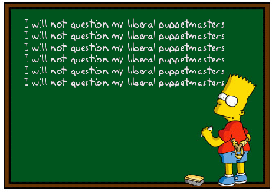
May 10, 2012

The Italian political theorist and longtime socialist journalist Carlo Galli recently published a short volume called Perché ancora destra-sinistra (roughly translated, “Why is there still right and left?”). Galli’s definitions show scant evidence of semantic evenhandedness. He seems to identify with a perfumed definition of the left as the good guys “favoring equality and freedom for every individual.” The right, by contrast, is assigned the less palatable role of having to “defend authority, economic inequality, and ethnic roots.”
German legal theorist Carl Schmitt (1888-1985), on whom Galli and I have both written extensively, was much better than Galli in coming up with key definitions. Schmitt associated right-wing attitudes with such political theorists as Thomas Hobbes and St. Augustine”that is, with those who believed that human nature is violent and selfish and that social and political institutions exist to check dangerous human appetites. The left, by contrast, believes people are rational and kindly and can be made even better with a properly planned society. Unlike the right, the left also assumes that all human beings are roughly interchangeable and will develop similarly if exposed to the same meticulously engineered environment.
Galli associates the left with the creation of a modern democratic government aiming at universal equality. The right is not only against the progress of this scheme but is going nuts from failing to stop it. The “right” as defined in this book is not the Republican Party or the editorial staff of NR. It is, according to Galli, the side that views “disorder as a structural given, indeed as something primordial.” Having lost so often to its democratic-egalitarian enemy, this contemporary right “has come to view reality as unstable and contingent.” It now mocks any attempt to discuss “a priori conservative values” because “it is convinced that reality has no foundation.” The true right assumes “the contingent nature of all politics and the continuing disorder of the world.” In the interior of “any such possible right” is the “idea of existing without foundations (infondatezza), which suggests something irremediably nihilistic.”
Right and left are competing methods for trying to shape political life, and what is usually termed gradualism is a procedure for achieving a leftist vision by stages. The left has been getting what it wants all along. The reason the right is divided into fake conservatives and an embattled faction which oscillates between often pornographic cynicism and fanciful counterrevolutionary postures is that our side has been steadily getting creamed. Nor do we seem able to influence the course of events that our enemies almost entirely control. This leads not only to frustration but to a view that nothing around us makes sense anymore. Talking up “conservative values” seems especially futile since we are dealing with moral preferences that have nothing to do with our political life.
But this is something Galli misses: Our sense of contingency sometimes overshadows our nihilistic despair and smart-alecky cynicism. At one time the revolutionary right, as manifested in places such as fascist Italy, imagined it could cure all civilization’s ills with one bold stroke. It was disastrously wrong. But it may be in the underdog’s nature to reach for the impossible. The power structure is stacked against the right. But hope”and not only despair”springs eternal.